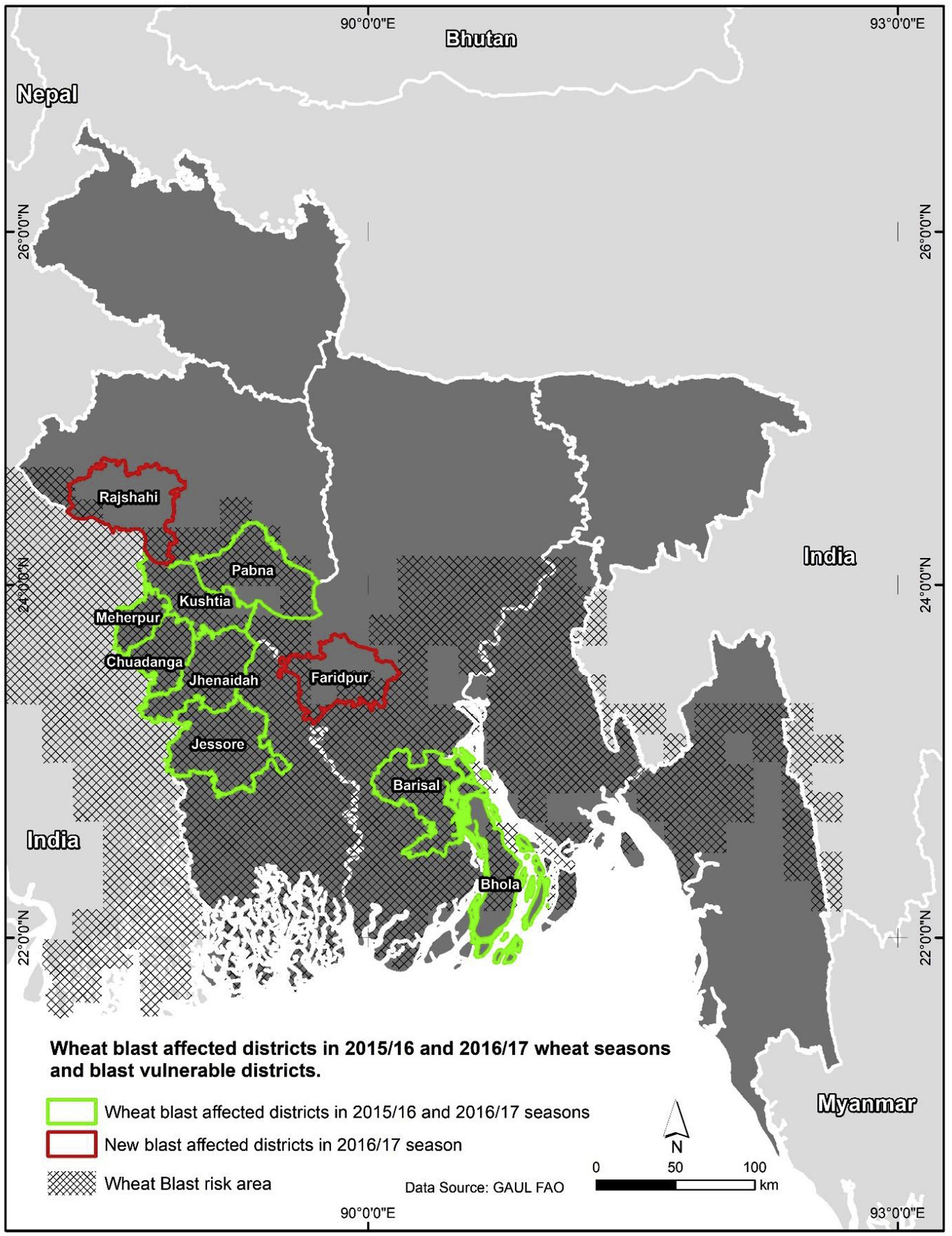Wheat blast (Magnaporthe oryzae pathotype Triticum, or MoT) was first discovered in Brazil in 1985. Since then, it has spread across central and southern Brazil, parts of Bolivia, Paraguay, and Argentina. Grain sterility caused by the disease can significantly reduce wheat yield, with reductions as high as 32% in some parts of Brazil, even with up to two fungicide applications.
The disease appeared in Bangladesh unexpectedly in 2016 and re-emerged in 2017. Wheat area consequently dropped from 62,763 hectares in 2016 to just 14,238 hectares a year later. Suitable climatic conditions in South Asia warn that wheat blast will be a long-term problem.
Some 300 million people in South Asia consume over 100 million tons of wheat annually. Wheat blast therefore presents a significant threat to food security. Compounding these problems, climate change and the evolution of wheat blast – increasing virulence, fungicide resistance and sexual recombination – present further threats.
This project responds to these problems by working to mitigate the effect of wheat blast in South Asia and South America and limit the risk of further spread of this threat, with an emphasis on training, surveillance and monitoring to mitigate the threat of wheat blast disease in Bangladesh and beyond.
Objectives
- Improve upon a preliminary modeling framework to manage data requirements for automated time- and spatially-explicit wheat blast outbreak early warning systems (EWS)
- Improve flowering predictability to more accurately gauge disease risk
- Demonstrate the performance of wheat blast resistant and zinc biofortified variety BARI Gom 33 in farmers’ fields.


 Nutrition, health and food security
Nutrition, health and food security